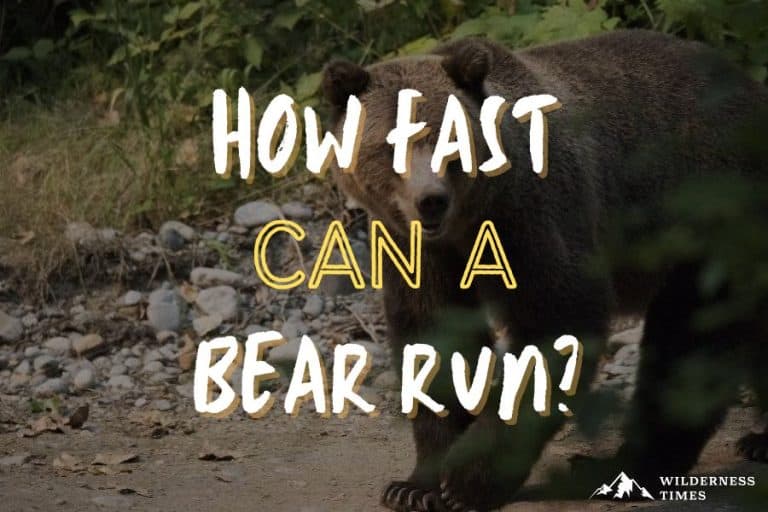In North America, one of the most common wildlife you are most likely to encounter are bears.
But because they are so bulky and cute, you probably haven’t considered how fast a bear is in comparison to you.
The average running speed of a brown bear is 25 mph, or as fast as a tiger
Bears’ chubby appearance makes us think they couldn’t run half a mile even if they wanted to. But this couldn’t be further from the truth.
Obviously, not all bears run at the same speed. How fast they can run mostly depends on their size and weight.
But there is one thing for certain. Bears are surprisingly fast animals!
Table of Contents
ToggleHow Fast Can Bears Run? Different Speeds Of Bears
You can find bears all over the world. There are 8 main species of bears worldwide and many more subspecies.
They all have different speeds – but they are all faster than you’d expect.
In the US, most bears fall into one of three: black bears, brown bears, or polar bears.
Based on sheer bear populations, the most common bears in the US are Kodiak bears, grizzly bears, polar bears, and North American black bears.
While bears generally steer clear of humans, it is always a possibility that you could encounter a bear when in bear country.
If you’re in their house, you are probably going to cross them at some point.
Bear | Top Speed | Average Speed | Weight | Geographical Location |
Kodiak bear | 40 mph | 25 mph | 660 to 1,320 pounds | Kodiak Archipelago (southwest Alaska) |
Grizzly bear | 40 mph | 35 mph | 700 to 1,700 pounds | Alaska, Wyoming, Montana, Idaho, Washington, southern Colorado, western Canada |
Black bear | 35 mph | 30 mph | 90 to 551 pounds | Alaska, Canada, United States, northern Mexico |
Polar bear | 25 mph | 15 mph | 900 to 1,500 pounds | The Arctic Circle to the North Pole |
Kodiak Bears
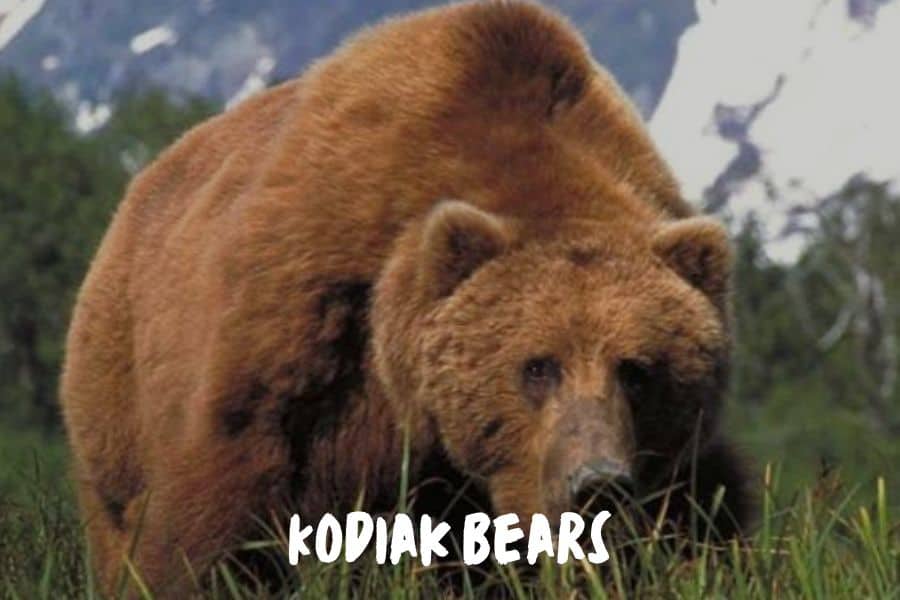
Kodiak bears are unique bears because not only are they the largest subspecies of brown bears, but they are only found in the Kodiak Archipelago of Alaska.
They are also the largest bears in the world, and there are only about 3,500 of them.
Like most brown bears, Kodiak bears’ fastest speeds can reach up to 35 mph for a roughly 3-mile distance.
Grizzly Bears
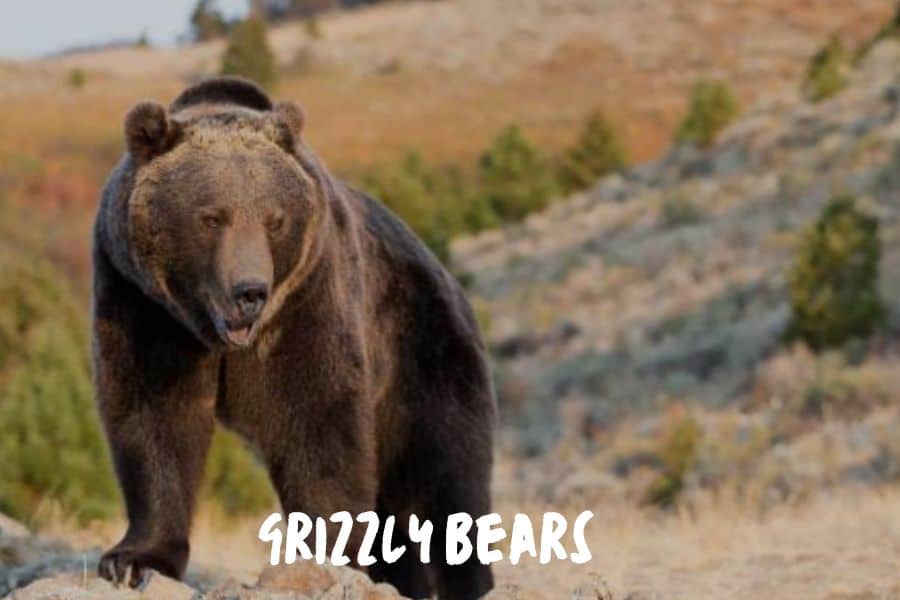
The other type of brown bear in the US is the grizzly bear. While Kodiak bears are only in Alaska, grizzlies live throughout the rest of the US.
The smaller brothers of Kodiak bears, adult grizzlies can weigh up to 700 lbs and range in color from tan to nearly black.
Grizzlies are most common in the western US, especially in forest areas like in Yellowstone National Park or Grand Teton National Park.
Grizzly bears can run at constant speeds of 35 mph, though they can reach up to 45 mph over short distances.
North American Black Bears
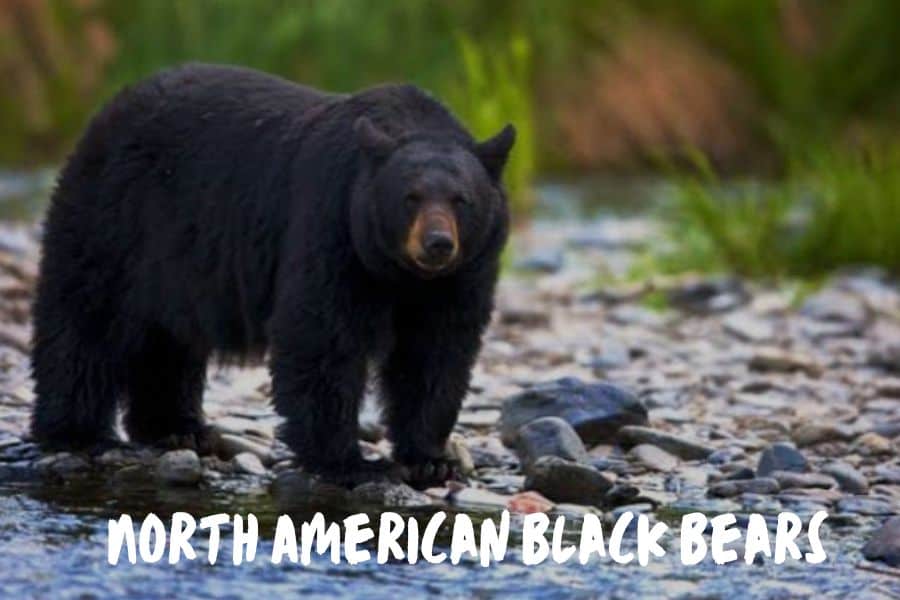
First off, not all black bears are simply black. They can be brown or red or even gray-ish!
The easiest way to identify black bears is in their size. They are quite smaller than their brown bear cousins.
Seeing as they’re smaller, black bears can run a little over 30 mph.
But with bears, that’s usually long enough for them to overtake their prey.
Polar Bears
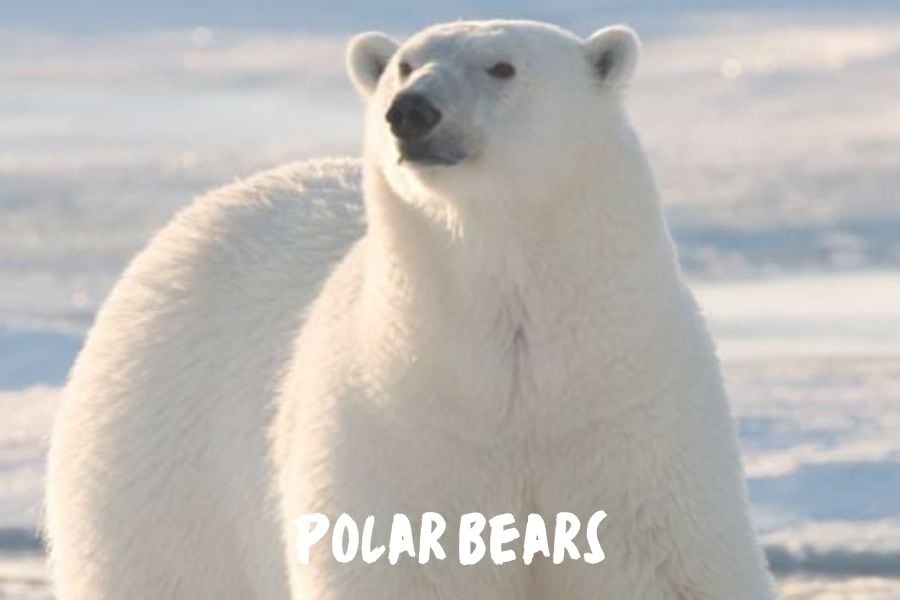
Even though they can only be seen in Alaska, there’s a possibility of encountering them if you ever go there.
Polar bears, like their Kodiak relatives, are huge. They can weigh up to 1,500 pounds!
This might make you think they’re not as fast as other members of the Ursidae family. And you’d be correct.
Due to the amount of blubber they have to keep on to stay warm in the arctic, polar bears overheat quickly. This means they only run short distances.
Even though it may not be for long, polar bears can run up to 25 mph, even over ice.
Now, that’s quite a skill!
Why Bears Are Fast
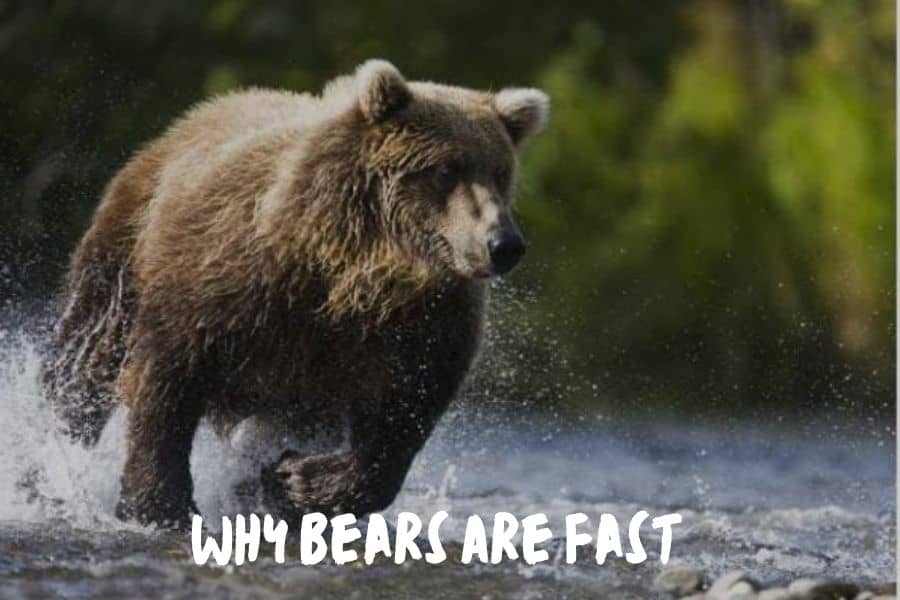
I know what you’re thinking – how can a bear be so fast?
After all, they have flat feet, a chubby stomach, and a thick layer of fur. But underneath all that, they have muscular legs that support their movements.
The main reason that bears are able to run so fast is their predator instincts.
Bears are omnivores, so yes, they eat berries. But they mostly survive off of fast, large prey like moose, elk, deer, bison, etc.
Therefore, bears need to be fast in order to hunt, catch, and take down their prey.
On a physiological level, bears are fast because they have longer back legs than front legs, which helps them achieve such high speeds.
Can A Human Outrun A Bear?
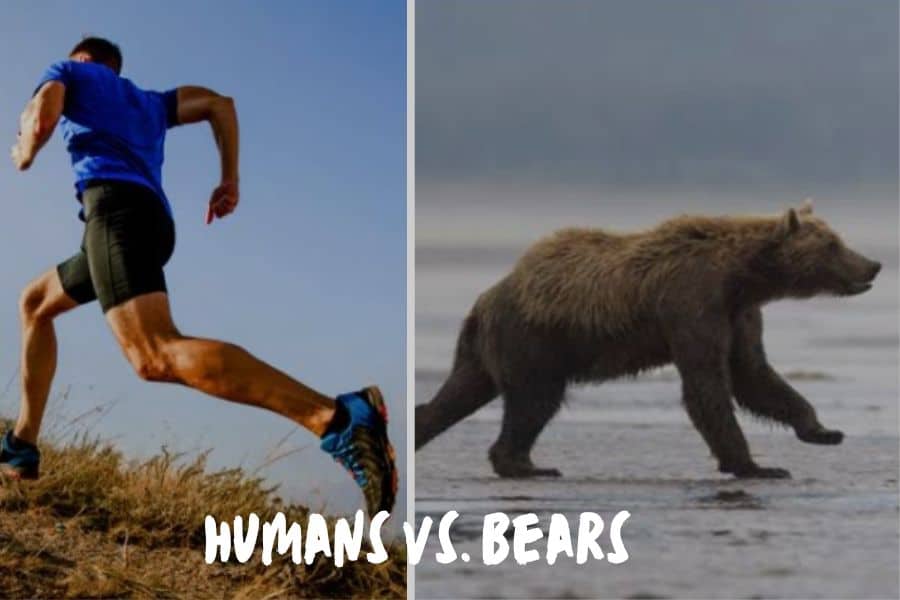
First off, never run from a bear. It may be your first instinct to run from danger. However, running from bears is more dangerous than staying put.
Now, you’ve probably been curious as to how fast a bear can run in comparison to a human.
The fastest person in the world, Usain Bolt, set the world record for running 100 meters in 9.58 seconds. That is roughly the equivalent of 27.33 mph.
Even at his finest hour, Usain Bolt could not outrun a bear.
According to Healthline, most men between the ages of 20-40 years old run about 5.9 mph, while women of the same age average about 5 mph.
So, for us average humans, most of us won’t be outrunning any bears any time soon.
What To Do If You Encounter A Bear
Do Not Run
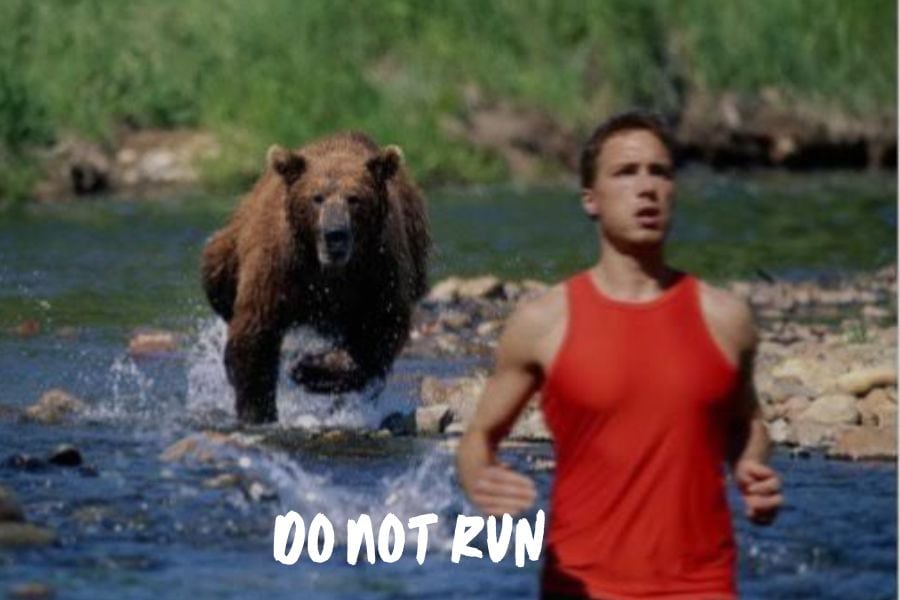
Whenever you come face to face with a bear, it’s vital that you DO NOT RUN away from them.
Any sudden movements can trigger a predator-prey response in the bear and can cause them to run towards you.
Most bears can run anywhere between 25-35 mph, so it’s unlikely that you will be able to run fast enough to get to safety.
If you’re doing everything right, the bear will likely move away on its own accord.
However, if the bear is not moving and the opportunity presents itself, you can move slowly backward with your eyesight directed away from the bear.
Any eye contact you make during this process can be interpreted as a threat by the bear, even if you’re in the process of moving away.
Make Yourself Known
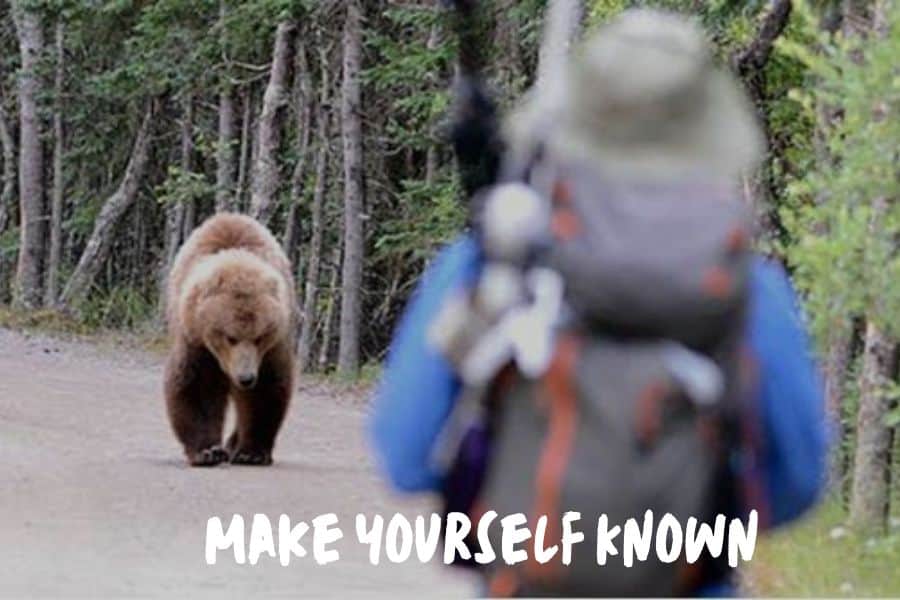
Contrary to popular belief, bears don’t really want to be close to humans. That’s why you should make noise constantly throughout your hike.
It will let them know you’re there, and keep them away. Another thing you should do is store your food properly, so they don’t sniff out the scent.
Because if they do, you’re likely to have hungry guests over for dinner.
But, if you do see a bear during your hike, the most important thing you should do is stay calm.
Remember, they don’t see you as food or a threat. As long as you’re not making any unexpected movements or high-pitched sounds, a bear will leave you alone.
Try talking to the bear in a low voice. That way, you’re showing that you’re a human and not an animal.
Try to make yourself bigger by climbing a chair and waving your hands – but not in a psychotic manner.
Start moving away, but slowly, and never turn your back on the bear.
Ideally, move to the side, so that you can see where you’re going. Do this until you’ve moved far enough for a bear to show any more interest in you.
Use Bear Spray

Finally, always carry bear spray. These sprays are a must when venturing into bear country, and are very effective when sprayed from a 4’11” to 9’10” distance.
When sprayed onto a bear’s face, it causes its eyes, nose, and lungs to swell. This means they lose their sight and have trouble breathing.
This is only temporary and it’s completely harmless to the bear. The effect lasts around 45 minutes, which gives you enough time to leave the area.
Ultimately, bear spray is the last resort. It can affect humans just as much as bears, so it has the risk of affecting you as well.
If trying to get away from the bear hasn’t worked, then use your bear spray. But be careful to stay upwind and be sure you know how to use the canister properly.
FAQs
Can A Dog Outrun A Bear?
It depends. Most bears can run anywhere between 25-35 mph. In comparison, most average dogs run at around 20 mph.
While this speed can vary depending on dog breed, it’s more likely that a bear will be able to run faster than a dog.
How Long Can Bears Maintain Top Speeds?
It’s unlikely that a bear will be able to maintain its top speeds for more than a short sprint.
However, historic Yellowstone National Park records maintain that a bear can run at mid-speed (20-25 mph) for up to two miles.
How Fast Are Bears Compared To Other Animals?
Compared to other animals you might find in the same habitat, most bears are definitely fast, but not the fastest.
This is largely because of their size. Many of the other animals that boast faster running speeds are smaller or have lower bodies built specifically for running.
The exception to this rule is the grizzly bear, which can run up to 45 mph, while other bear species clock in at around 35 mph.
In comparison, a mature elk can run up to 40 mph, a moose up to 35 mph, a whitetail deer up to 30 mph, a coyote up to 43 mph, and a red fox up to 30 mph.
Can Bears Climb And Swim, Too?
Yes, most bears can both climb and swim – and are really good at it.
If you’re ever in a face off with a bear, do not climb up a tree or enter a body of water in the attempt to get away from them. They will likely just follow you.
What Is The Fastest Bear Species?
The fastest bear species is the grizzly bear, which can run up to 45 mph.
To Sum Things Up
Thanks to our teddy bears we all owned as kids, we tend to see bears as cuddly and clumsy animals.
But in reality, bears are far from cuddly and clumsy. They’re strong, agile, and extremely fast.
Most bears average top speeds of 20-35 mph. So, not even the fastest human on Earth can keep up with them.
If you ever have a bear encounter on a hike, I hope I’ve convinced you to never run away. Instead, stay calm and identify yourself.
If you follow these tips, it’s very likely you’ll never have an issue with these glorious, strong, and fast animals.
More on Bears:


